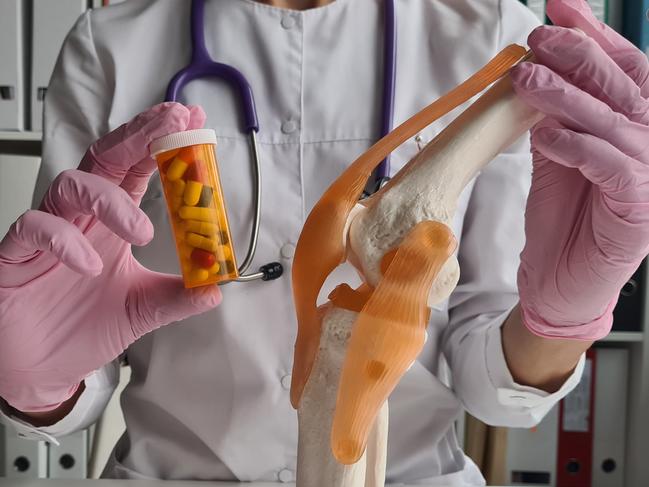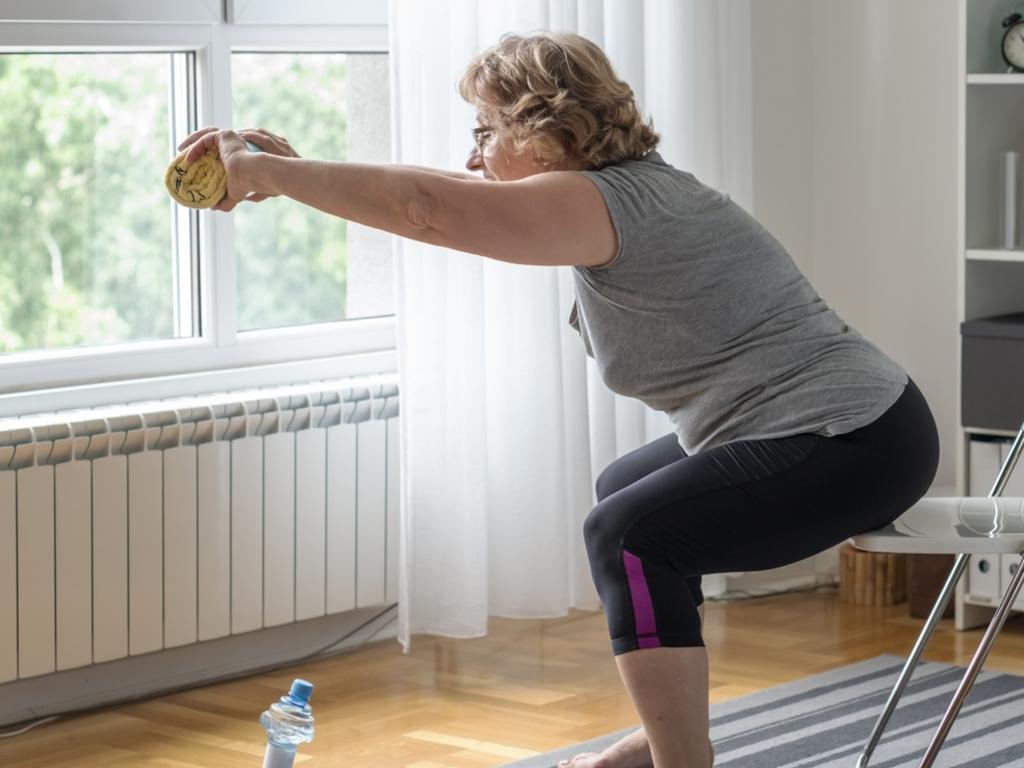The good knee guide: protect your joints
Which exercises you should do, the supplements that might help and whether or not to have an MRI scan – an expert gives his tips.

Are your knees niggly, aching or sore? After backs, our knee joints are the most common site for musculoskeletal pain, with up to 20 per cent of over-16s reporting knee pain persisting for more than a week in some studies. It only gets worse as we age. According to the National Institute for Health and Care Excellence, almost half of over-50s have complained about knee pain at some point.
Alister Hart, an orthopaedic surgeon who is chair of academic orthopaedics at University College London, says the true figures are probably higher. “Perhaps 99 per cent of us will have some knee pain at some point in our lives,” he says. “It’s rarely serious, often passes and mostly doesn’t need treatment.”
But we do need to look after our knees and future-proof them with good habits. “As an orthopaedic surgeon I have replaced thousands of worn-out knees during my career,” he says. “But I do know that there is a lot of misinformation about knees and much we can do to actually help preserve the joints.” Here’s what we need to know.
Should I avoid squats?

A decade ago anyone prone to knee pain might well have been advised to rest and avoid exercises that put undue strain on the knee joint, such as squats. That has now changed.
“Squats are the single best exercise for healthy knees and joints,” Hart says. “Vary them with single-leg, heel-raised and weighted varieties for progression.” Squats are also a common feature in rehab routines after knee injuries, although you should never dive straight in to doing deep squats with heavy weights. “Begin with shallow squats and no weights and only on the advice of a physio if you have been injured,” he says. “No squats should cause pain.”
Are there any other exercises I can do to lessen knee pain?
The quadriceps muscles in the front of the thighs work as shock absorbers for the knee, also helping to improve stability, so it is important that they stay strong. “But strengthening just one muscle group is not the best approach,” Hart says. “You also need to strengthen calves, glutes, hip adductors and hamstrings to keep the knees robust.”
One of the best ways to do this is through eccentric loading of muscles, which occurs during the lowering phase of a movement. “Lengthening the supporting muscles with eccentric exercises is the quickest way to better knee support,” Hart says. “Descending stairs slowly will strengthen the quads and dropping heels slowly after performing a calf raise will work the calf muscles.” Also try doing straight-leg raises while sitting on the sofa - straightening fully and raising one of your legs, holding for a slow count to ten, then slowly lowering your leg. Do this five to ten times with each leg.
Will taking supplements help to keep my knees in good shape?

An array of supplements – from glucosamine and chondroitin sulphate to collagen and turmeric – claim to relieve and prevent knee and joint pain but there’s little evidence that they have a direct effect on the knee joint or that they work at all.
A review of studies involving 4,000 people published in the journal Archives of Orthopaedic and Trauma Surgery found that glucosamine and chondroitin supplements had little or no effect on relieving osteoarthritis knee pain. And while curcumin, the active ingredient in turmeric, has anti-inflammatory properties, not enough is yet known about how it affects joints.
People with low levels of vitamin D, the best source of which is sunshine, have been shown in some studies to be more susceptible to joint pain, so correcting a shortfall might be beneficial. A 2024 Scientific Reports study on men with knee osteoarthritis showed that those with higher vitamin D levels had lower pain scores. Similarly, a deficiency of vitamin K, found in leafy greens, prunes and Kiwi fruit, has been associated with higher incidences of knee problems in some studies. “The only supplements I recommend for healthy knees are vitamin D taken with vitamin K,” Hart says. “The rest are probably not worth buying.”
Is running a surefire route to bad knees?
Because it is a high-impact activity, running has a reputation for being a knee-wrecker, but while it loads the knees more than walking, for example, it may also strengthen the supporting muscles and, according to a study in PeerJ, help to fortify cartilage. It’s never too late to start. In one of his studies published in the British Journal of Sports Medicine (BJSM), Hart showed that even in beginners, regular-distance running can help to improve middle-aged knee health.
This was true even if scans of the participants before they took up running showed that their knees were in bad shape, with damaged or torn cartilage or lesions in the bone marrow. After four months of marathon training, the first-timers had strengthened and stabilised muscles around their knees, helping to reverse some of the tissue damage. “It seems that better blood supply and stress responses from running lead to these positive changes in the knee joint,” Hart says.
Other studies have shown that inflammatory molecules in the knee joint decrease after running, reducing inflammation around the joint. However, common sense should prevail. “If starting out, you should always proceed with caution as too many miles too quickly is not a recipe for healthy joints,” Hart says. “And if you have had a serious knee injury that causes ongoing instability or causes the knee to give way, then running is probably not for you.”
My knees start to ache after going to the gym or running - is that a bad sign?
Some aching in the muscles around the knee after a hard workout is normal. However, if pain is acute and severe, you need medical attention. If the discomfort is more of an ache that develops over time, you need to monitor it.
“If you did your usual amount or up to 10 per cent more gym work or run distance session compared to the previous week, then it is very unlikely that the knee discomfort is a problem,” Hart says. “But if you added any new exercises, or increased weights or the intensity of a run or session by quite a bit, then you probably need to rest for up to 48 hours and apply ice for up to ten minutes at a time as some minor muscle damage will have occured.”
Restart with light exercises and progress intensity, duration and frequency by no more than about 10 per cent a week. If the discomfort persists, you will need to see a physiotherapist for advice.
“The worst activities for knees are those that involve pivoting, change of direction, tackles and twisting,” Hart says. “So skiing, rugby, netball, football and basketball are worse than cycling, running and swimming.”
Do I need an MRI scan on my knees?

Magnetic resonance imaging (MRI) is widely used for knee pain because it provides detailed assessment of the bone and soft tissues, but MRI scans are not mandatory for every joint ache and pain, and surgeons say that a simple x-ray will often suffice.
“You do not need an MRI unless there are red flags for serious injury such as those that occur with a fall from a great height or a high-speed car crash,” Hart says. “An MRI might also be recommended if, after one week of rehab, you still can’t straighten the knee or if it gives way when you try to bear weight, but the majority of people with knee pain do not need a scan.”
In one study by doctors at Northern Lincolnshire and Goole Foundation Trust, published in Annals of Medicine and Surgery, 76 per cent of patients referred to orthopaedic surgeons had undergone inappropriate MRI scans. Another investigation, at University Hospital Coventry and Warwickshire, showed that in many cases results of primary MRI scans have little bearing on treatment outcomes. In most people over the age of 50 an MRI is likely to reveal some age-related decline in cartilage health, which may or may not be the cause of your knee pain.
Is walking enough to keep knees healthy?

Keeping up your daily steps is fundamental for good knee health, helping to keep joints, muscles and tendons in shape. Walking helps the knees even if you have early-stage osteoarthritis, although you will need to build up gradually and take advice from a specialist if you experience significant pain when you move. For those who don’t, Grace Hsiao-Wei Lo, assistant professor of immunology, allergy and rheumatology at Baylor College of Medicine in Houston, Texas, found that middle-aged and older people who walk for exercise had less new knee pain than non-walkers.
She also suggested that walking could help to slow osteoarthritis knee damage. “People diagnosed with knee osteoarthritis should walk for exercise, particularly if they do not have daily knee pain,” Lo says. “If you already have daily knee pain, there still might be a benefit, especially if you have the kind of arthritis where your knees are bow-legged.”
I ruptured my ACL playing sport - do I need to go under the knife?
Injuries to the anterior cruciate ligament (ACL), a tough band of tissue that connects the thigh to the shin bone at the knee joint to provide stability, are common in sports that put pressure on the knee through change of direction, such as skiing, football, tennis and squash.
But even if you tear the ACL completely you might not need to go under the knife for reconstruction, and it is something to discuss with your surgeon. Much depends on whether there is damage to other parts of the knee and if you want to play sports that involve a lot of twisting, as well as whether you have a heavy manual job, Hart says.
In many cases returning to forward motion-only sports such as cycling, walking and running is possible after a period of rehabilitation even without surgery.
A 2022 study in the BJSM found that ACL surgery had no protective effect against future knee osteoarthritis and that “a significant improvement in knee function could be achieved” with carefully structured exercise just as well as with surgery.
The Times




To join the conversation, please log in. Don't have an account? Register
Join the conversation, you are commenting as Logout